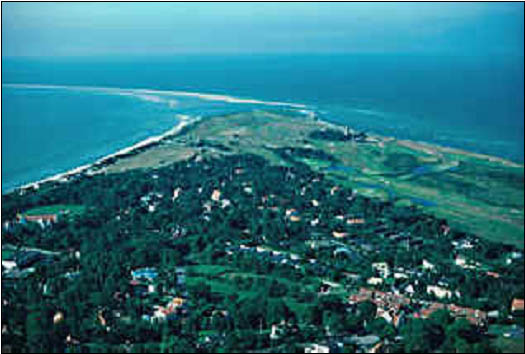| Falsterbo Peninsula - Sweden |
| Complete description
of case study |
PHOTO OF THE SITE
 |
|
CASE STUDY
| Title | Falsterbo Peninsula |
| National level | Sweden |
| Regional level | Skanelän county |
| Local level | Falsterbo |
ABSTRACT
|
Falsterbo Peninsula is located in the most southern province of Sweden – Scania – and it is famous for its unique scenery, white beaches and golf courses, factors that make it an excellent recreational area. Sweden generally does not suffer from coastal erosion because of land uplift, but it does occur in Scania, where the land uplift is around zero and land subsidence, although it is really small and seems insignificant, will result in the long run in ongoing erosion on most of Scania’s southern coast. Falsterbo peninsula is very low lying and built of unconsolidated sand, so it is very sensitive to erosion and to rising sea levels. In the current situation, erosion problems are very local and are not present on a large scale. Attention is focused on the coastal dynamics along the valuable south and west coasts, characterized by rather wide sandy beaches, suitable for recreation but prone to erosion. The northern shoreline is subject to much lower incoming wave energy and generally quite stable. South of the Peninsula is the island of Makläppen, together with two tongues of sand. Clear indications are found that the peninsula has not reached its equilibrium shape. The measures taken locally are very old and in general no longer effective. However, erosion has not caused great problems in the past at Falsterbo Peninsula. In the future scenario,
the peninsula is very sensitive to sea level rise and will need extra
coastal protection to prevent flooding. Before taking any measures to
combat the predicted sea level rise, extensive studies of the effects
of sea level rise on the peninsula are needed, to determine the best solution.
|
BASIC INFORMATION
| Coastal characteristics |
|
| Policy options | Historical:
Hold the line or Limited intervention Present: Do nothing |
| Socio-economic activities | Tourism and recreation, urbanisation, nature conservation, fishery and aquaculture |
| Engineering techniques | Historical:
seawall and groins Future: vegetated earth dams and beach nourishment |
SOURCE
| Name | Hans Hanson |
| Institution | Dept. Of Water Resources Engineering, Lund University |
| Telephone / fax | +46 46 222-8987/ +46 46 222-4435 |